Abstract
China's extraordinary economic growth, industrialization, and urbanization, coupled with inadequate investment in basic water supply and treatment infrastructure, have resulted in widespread water pollution. In China today approximately 700 million people--over half the population--consume drinking water contaminated with levels of animal and human excreta that exceed maximum permissible levels by as much as 86% in rural areas and 28% in urban areas. By the year 2000, the volume of wastewater produced could double from 1990 levels to almost 78 billion tons. These are alarming trends with potentially serious consequences for human health. This paper reviews and analyzes recent Chinese reports on public health and water resources to shed light on what recent trends imply for China's environmental risk transition. This paper has two major conclusions. First, the critical deficits in basic water supply and sewage treatment infrastructure have increased the risk of exposure to infectious and parasitic disease and to a growing volume of industrial chemicals, heavy metals, and algal toxins. Second, the lack of coordination between environmental and public health objectives, a complex and fragmented system to manage water resources, and the general treatment of water as a common property resource mean that the water quality and quantity problems observed as well as the health threats identified are likely to become more acute.
Full text
PDF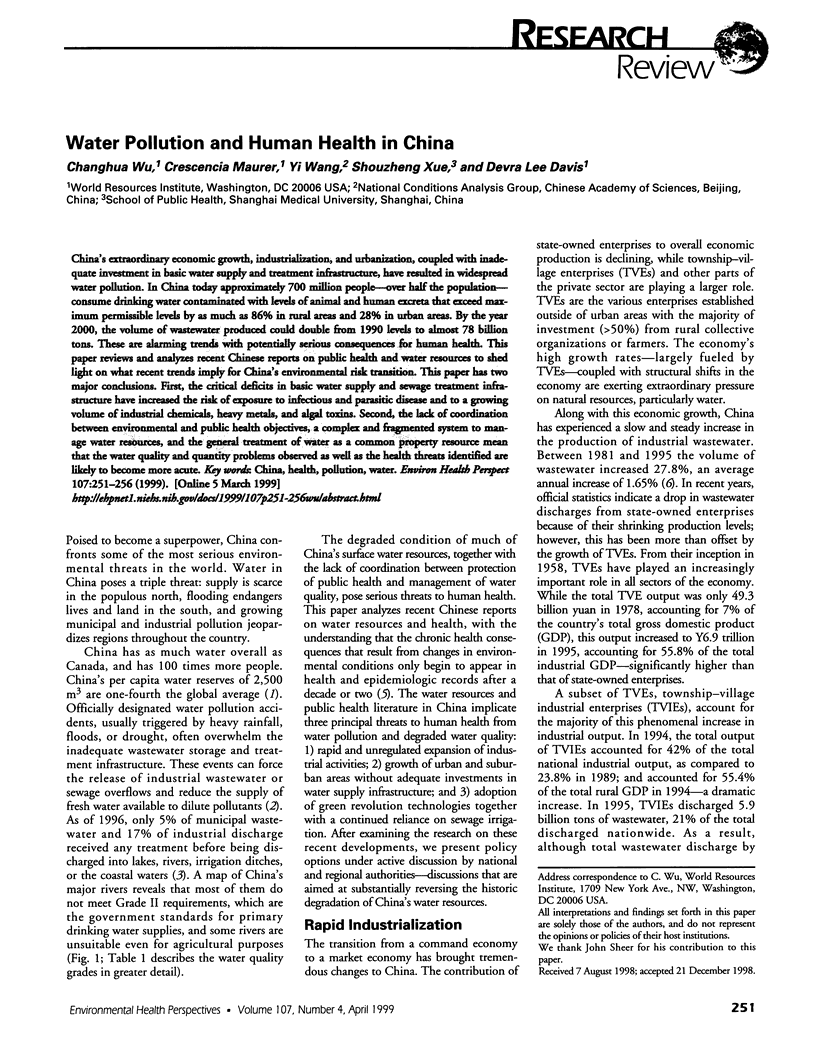
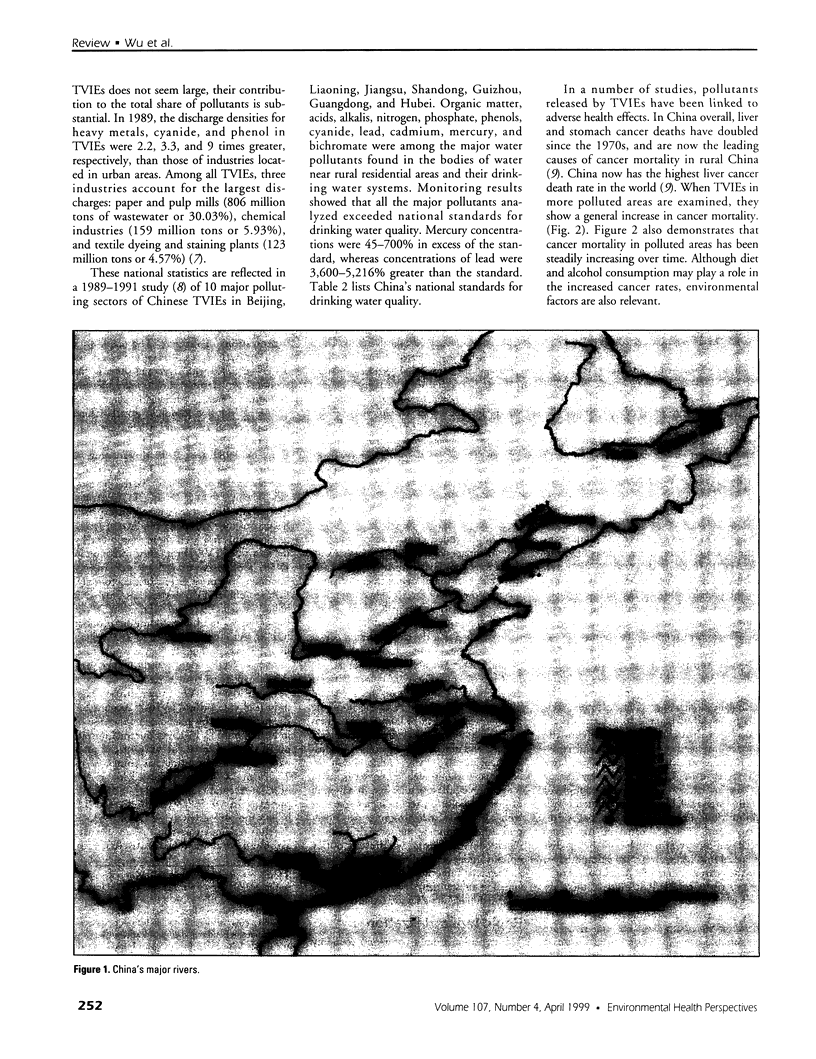

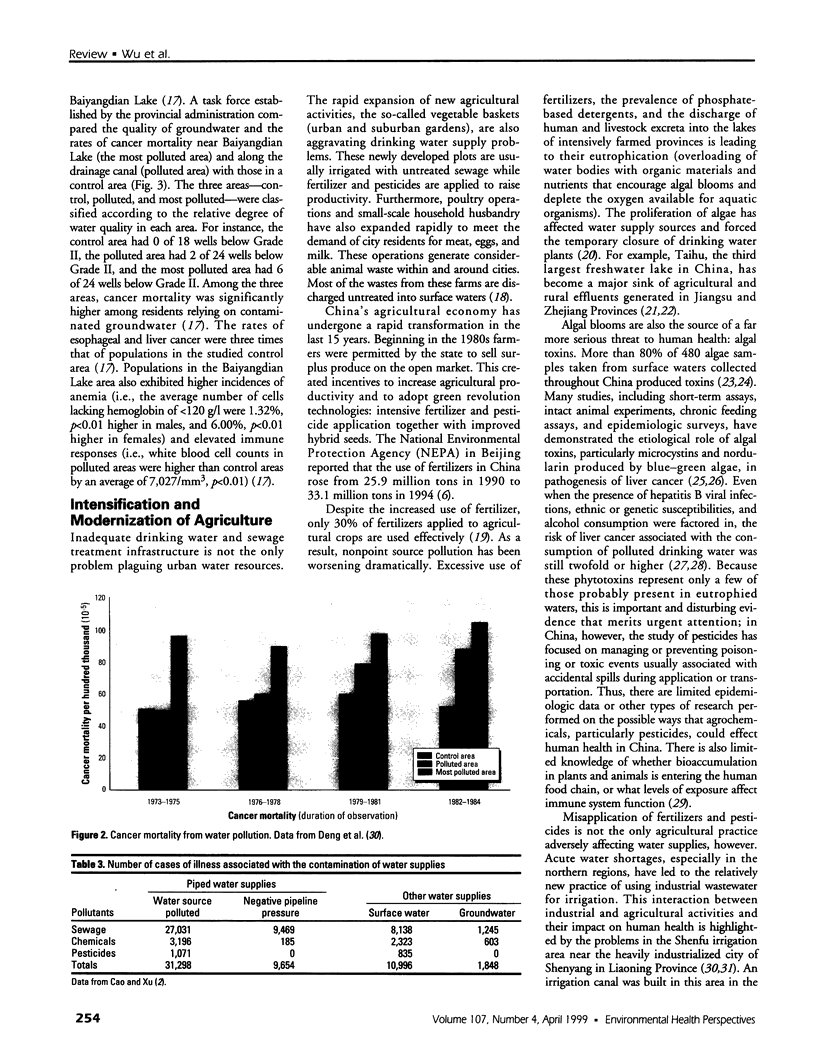
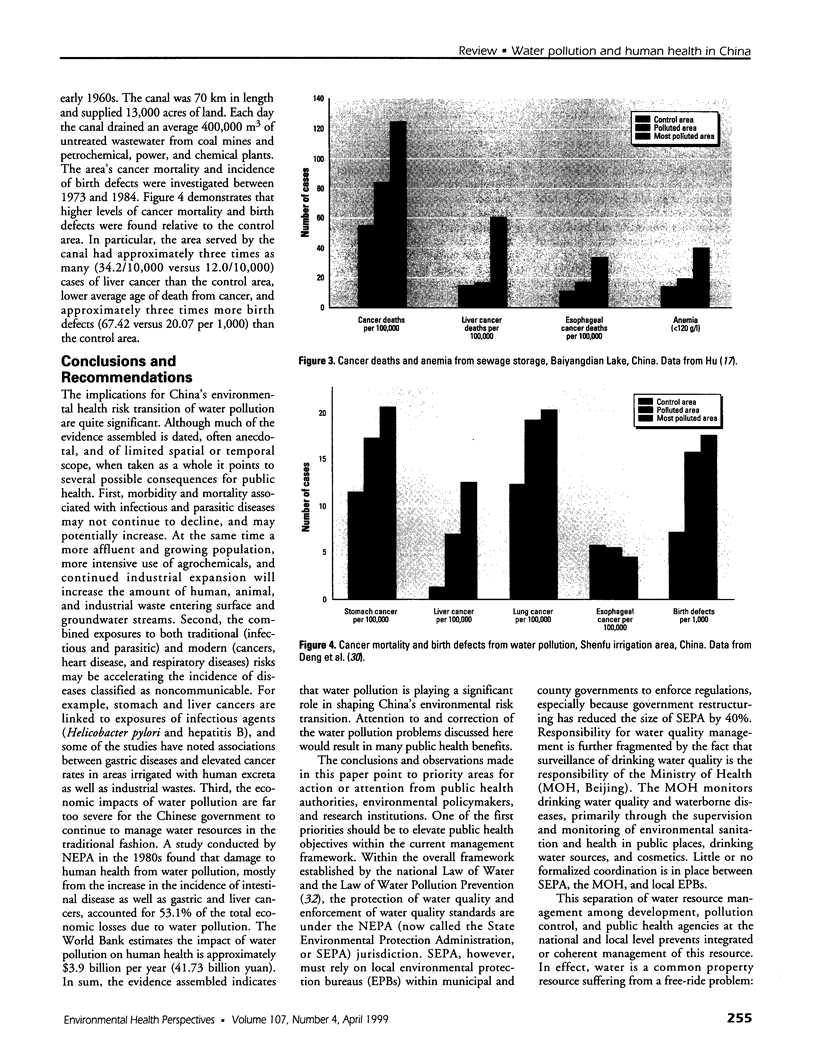
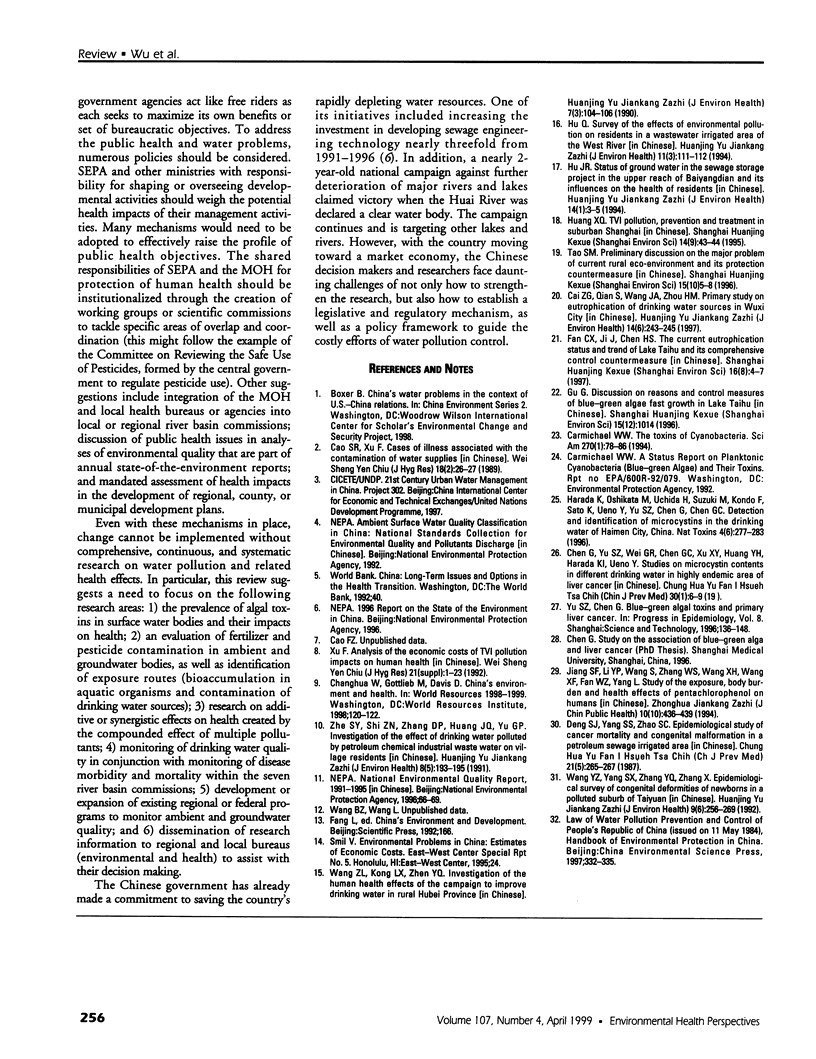
Images in this article
Selected References
These references are in PubMed. This may not be the complete list of references from this article.
- Carmichael W. W. The toxins of cyanobacteria. Sci Am. 1994 Jan;270(1):78–86. doi: 10.1038/scientificamerican0194-78. [DOI] [PubMed] [Google Scholar]
- Chen P., Rose J., Love R., Wei C. H., Wang B. C. Reactive sites of an anticarcinogenic Bowman-Birk proteinase inhibitor are similar to other trypsin inhibitors. J Biol Chem. 1992 Jan 25;267(3):1990–1994. doi: 10.2210/pdb1pi2/pdb. [DOI] [PubMed] [Google Scholar]
- Harada K., Oshikata M., Uchida H., Suzuki M., Kondo F., Sato K., Ueno Y., Yu S. Z., Chen G., Chen G. C. Detection and identification of microcystins in the drinking water of Haimen City, China. Nat Toxins. 1996;4(6):277–283. doi: 10.1002/(SICI)(1996)4:6<277::AID-NT5>3.0.CO;2-1. [DOI] [PubMed] [Google Scholar]






